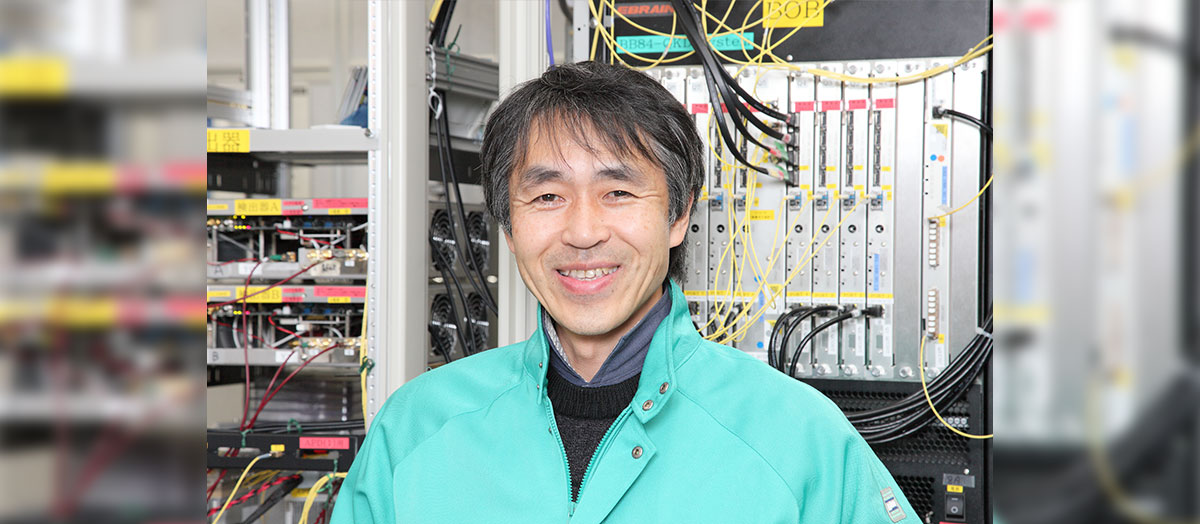
Introduction of the Quantum Key Distribution Technology Promotion Committee
Masahide SasakiChairperson, Quantum Key Distribution Technology Promotion Committee,
Quantum Forum
In order to promote and develop quantum key distribution technology, the Quantum Key Distribution Technology Promotion Committee conducts activities such as publishing technical documents, proposing R&D roadmaps, supporting standardization and commercialization, and providing opportunities for exchange and collaboration through seminars and study groups.
Quantum cryptography is a cryptographic scheme that in principle cannot be deciphered using any computer technology. The core of quantum cryptography is quantum key distribution (QKD), which uses photons to share keys. In quantum cryptography, a key shared by QKD is used in a manner called one-time pad. This enables extremely secure communications of national secrets, medical and financial information, and important personal information over the network. When combined with a storage network, it can realize quantum secure cloud that securely stores and utilizes important information for very long periods of time in a century scale.
Full-scale research and development of quantum cryptography began in Japan in 2001, and Toshiba commercialized the technology 20 years later, in the fall of 2020. In the turnaround year of 2010, an industry-academia-government team in Japan built the “Tokyo QKD Network,” a testbed for metropolitan areas, and achieved the world’s first completely confidential video conferencing. Subsequently, quantum cryptography equipment was improved, QKD network technology and application technology was developed, and the results were widely presented to the world at the International Conference on Updating Quantum Cryptography and Communications (UQCC 2015) held in Tokyo in 2015.
From about that time, movements toward practical application began in earnest in the field of quantum cryptography, and the importance of integrating quantum cryptography with various peripheral technologies to create a well-balanced security system became recognized. In light of such a background, the Quantum Key Distribution Technology Promotion Committee was established in the autumn of 2017 under the Quantum ICT Forum, which had not yet been incorporated as a general incorporated association, in order to study strategies for standardization, implementation in society, and merger of fields related to quantum cryptography and related technologies. Committee members including experts in QKD technologies, providers considering starting projects utilizing QKD, and users who need to handle important communications in their day-to-day tasks joined and started to create technical documents for standardization.
This committee is composed of a chair, secretary, five core members and 33 general members (as of August 2021). It meets about five to six times a year to identify accurate technical information, share the latest technological and commercialization trends, and discuss applications and business prospects. It also holds joint committee meetings with the Quantum Computer Technology Promotion Committee and the Quantum Measurement and Sensing Technology Promotion Committee as well as study groups inviting external experts and observers from government ministries and agencies, thereby actively promoting field and industry collaboration.
Cases of matching among members are also seen, such as the launch of collaborative activities for commercialization among Forum member companies that met through these activities. There, information such as the forefront of new business startups and the latest trends in related ventures, which cannot be heard in regular committee meetings, is shared, and meetings are filled with the dynamism and enthusiasm of business. Moreover, future technological trends and emergence of new research fields can often be witnessed as well. Usually, being said that basic research is upstream, then commercialization would often be considered to be downstream, and the players are thought to be different. However, in a meeting where members from different fields and industries get together, we realize that R&D is not as simple as that. Rather, it is something that is circulating, such as finding seeds of a new research field at the very frontier of commercialization.
Thanks to the consistent efforts of industry-academia-government collaboration over the past 20 years, Japan’s QKD devices boast the world’s highest performance, and Japan is leading the way of social deployment typically exemplified by the implementation of quantum secure clouds. In international standardization, recommendations based on Japanese technologies have been established one after another. The fierce negotiations in international standardization are introduced in the e-mail newsletter and serial essays of the Quantum ICT Forum, and we hope you will enjoy reading them.
This field are advancing rapidly as seen in that China steadily expands the scale of their QKD network demonstration and Europe as well launches a project to build a quantum communication infrastructure across Europe. But those efforts still lack something. In order to build a truly scalable, reliable and highly available “quantum” network, the “classical” domain is also essential. In particular, I believe that we cannot build a system that can be used in the real world unless we develop new “classical” network technologies to improve network throughputs and fault tolerance, and integrate them with “quantum” networks. I don’t think there is any other country that can yet match Japan in terms of the elemental technologies and system integration capabilities needed to achieve this. While much information is not yet disclosed, we plan to provide introductions to it in the future.
I believe that we are now entering the phase of building a full-scale quantum technology infrastructure in Japan as well. In addition to building a new technology system to support this, we need to create a business ecosystem consisting of component manufacturers, wire manufacturers, equipment vendors, telecommunications operators, service providers, and evaluation and certification organizations. To this end, one of the key issues to be addressed by this committee is to support the standardization of detailed specifications for interconnection and to develop guidelines and procurement standards for evaluation, certification, and verification. This is a challenging issue also related to institutional aspects, but I think it is a task that only the Quantum ICT Forum, which brings together experts, businesses and users in related fields, can accomplish. We intend to compile these documents into the “Quantum ICT Forum Standard” and work with concerned parties in order to contribute to society.